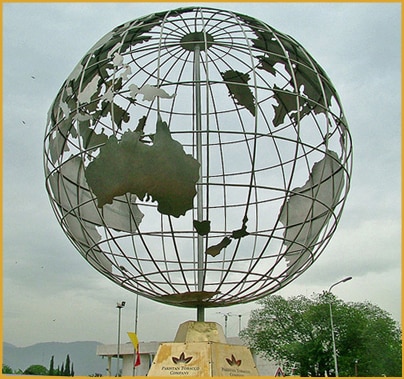
Really, it’s a situation that a being from another planet might have trouble wrapping its head around, if it had a head. On Earth, 15% of the humans exist in a state of hunger, while 20% are overweight. Conceptually, it looks a bit like the sculpture shown on this page. In some places, there is a lot of something, and in other places, little or none. Where food is concerned, many people hold a basic belief that the distribution pattern should be much more even.
But the most puzzling aspect of all this, to a space alien, would be that a whole lot of people are both overfed and undernourished. It is a mystery worth looking into.
Newsweek writer Lisa Miller tacked the subject with a long article titled, “Divided We Eat: a growing number of Americans don’t have enough nutritious food to eat,” which notes that the contemporary American approach to food is unique in history. Americans, she says, look at food primarily in terms of nutrition, and if you ask them about eating well, they talk about daily allowances and calories, and carbohydrates and such.
Miller cites research done by French sociologist Claude Fischler, that brings up a vital question:
In surveys, Fischler has found no single time of day (or night) when Americans predictably sit together and eat. By contrast, 54% of the French dine at 12:30 each day. Only 9.5% of the French are obese.
Unlike an American, a typical French person will define eating well as an experience that includes the aesthetic aspects of cookery, as well as togetherness and conviviality. Not only that, they practice this togetherness. Is it a clue to their relative slimness? Or a wild coincidence? The writer discusses the food culture of her own Brooklyn neighborhood:
… [A] community that accommodates and celebrates every kind of foodie. Whether you believe in eating for pleasure, for health, for justice, or for some idealized vision of family life, you will find neighbors who reflect your food values. In Park Slope, the contents of a child’s lunchbox can be fodder for a 20-minute conversation.
But she realizes that not everyone is so fortunate, and looks into the efforts of activists to equalize the opportunities for people to not only care about good nutrition, but to acquire nutritious, affordable food. If they are able to get to a farmers’ market, many “food stamp” recipients can get good deals on groceries there. There are food co-ops and community gardens that grow food. It is even said that some cities have re-routed their public buses so people in disadvantaged neighborhoods can get to stores selling fresh food.
British epidemiologist Kate Pickett, the author says, has found that income disparity within a nation is an indicator of obesity. Developed countries where the gap between the richest and the poorest is enormous, like the USA, have high obesity rates. In a place like Japan, where there is not so much of a spread between the highest and lowest incomes, the population is surprisingly svelte.
Miller quotes Michael Pollan, who is such a dreamer he would like to see insurance companies supporting and advocating for small farmers who can supply fresh and maybe even chemical-free foodstuffs in their local areas. Pollan is quoted:
Essentially, we have a system where wealthy farmers feed the poor crap and poor farmers feed the wealthy high-quality food.
The author discusses the definition of “food insecurity,” saying:
… [T]he food insecure often eat what they can: highly caloric, mass-produced foods like pizza and packaged cakes that fill them up quickly.
Among other things, Miller discusses whether stopping “food stamp” recipients from buying soda will help, and then ventures an opinion that touches on but does not pursue a subject that has been the jumping-off spot for many Childhood Obesity News discussions: the deliberate engineering of essentially worthless pseudo-food to be irresistible:
Lower-income families don’t subsist on junk food and fast food because they lack nutritional education, as some have argued. And though many poor neighborhoods are, indeed, food deserts — meaning that the people who live there don’t have access to a well-stocked supermarket — many are not. Lower-income families choose sugary, fat, and processed foods because they’re cheaper — and because they taste good.
Your responses and feedback are welcome!
Source: “Divided We Eat: a growing number of Americans don’t have enough nutritious food to eat,” Newsweek, 11/22/10
Image by Guilhem Vellut, used under its Creative Commons license.

 FAQs and Media Requests:
FAQs and Media Requests: 











